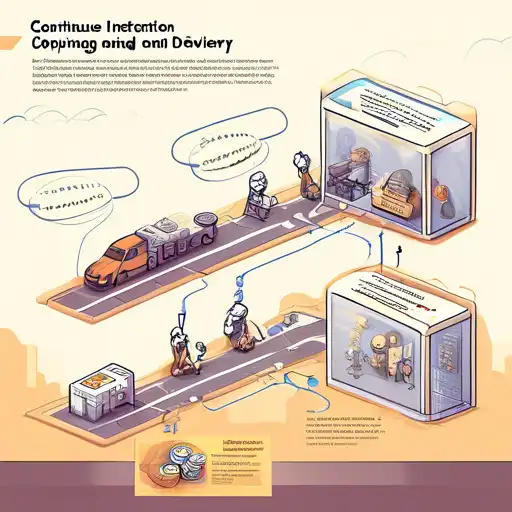What is Continuous Integration and Delivery?
Continuous Integration (CI) and Continuous Delivery (CD) are pivotal practices in modern software development, aimed at improving the efficiency and reliability of software releases. CI/CD automates the integration of code changes from multiple contributors into a single software project, ensuring that the software can be reliably released at any time.
The Benefits of CI/CD
Implementing CI/CD brings numerous benefits to software development teams, including:
- Reduced integration problems
- Faster release rates
- Higher quality software
- Improved team productivity
By automating the build, test, and deployment processes, teams can focus more on development and less on the logistics of software release.
How CI/CD Works
CI/CD pipelines are the backbone of these practices. A typical pipeline includes the following stages:
- Code commit to a shared repository
- Automated build and test processes
- Deployment to a staging environment
- Final deployment to production
Each stage is automated, ensuring that only code that passes all tests is deployed, significantly reducing the risk of errors in production.
Best Practices for Implementing CI/CD
To maximize the benefits of CI/CD, consider the following best practices:
- Maintain a single source repository
- Automate the build process
- Make the build self-testing
- Ensure fast builds
- Test in a clone of the production environment
Adhering to these practices ensures a smooth and efficient CI/CD pipeline, enabling teams to deliver high-quality software rapidly and reliably.
Challenges and Solutions
While CI/CD offers many advantages, teams may face challenges such as integration complexities and cultural resistance. Overcoming these challenges requires:
- Comprehensive training and education
- Gradual implementation
- Strong leadership support
With the right approach, teams can successfully implement CI/CD and reap its full benefits.
Conclusion
Continuous Integration and Delivery are essential practices for any team looking to improve their software development process. By automating the integration and delivery processes, teams can achieve faster release cycles, higher quality software, and improved productivity. For more insights into optimizing your development workflow, explore our guide on DevOps tools.
